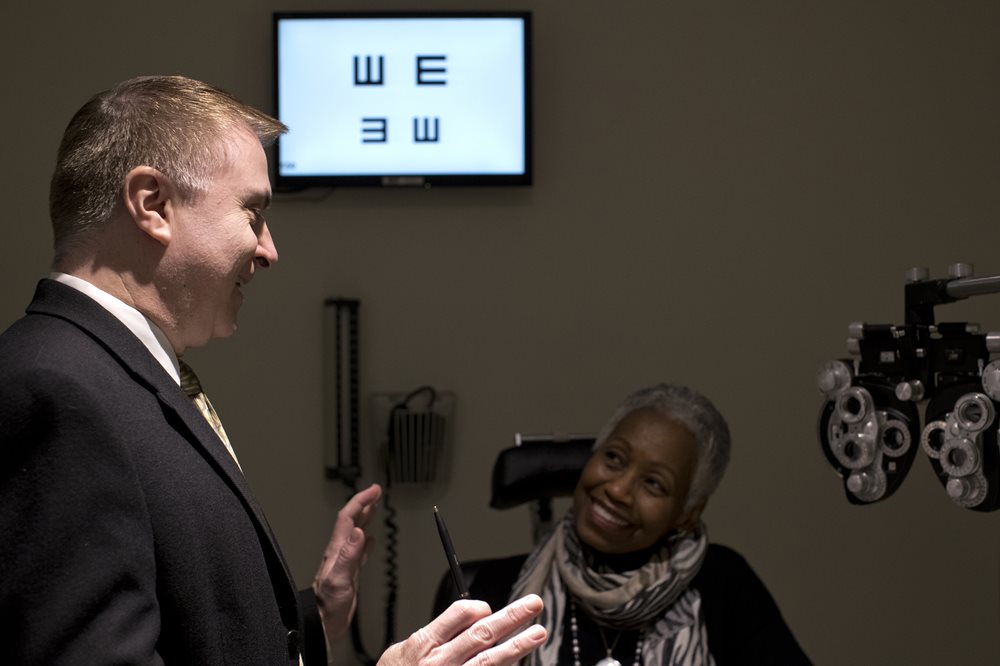Key Facts about Diabetes and Eye Health
Since November is Diabetes Awareness Month, it’s a time for us to educate the public and our patients and bring attention to a disease that impacts millions of Americans. Diabetes is caused by the body’s inability to produce or respond to insulin, which results in abnormal levels of glucose (sugar) in the body. Those who suffer from diabetes are at a higher risk for various eye conditions and other visual complications.
 Here are some key facts about diabetes and eye health:
Here are some key facts about diabetes and eye health:
- Diabetic retinopathy is a condition occurs when high blood sugar levels cause damage to the blood vessels in the retina, causing swelling and leaking. According to the National Eye Institute, diabetic retinopathy is the most common cause of vision loss for people with diabetes and is a leading cause of blindness in American adults.
- Diabetes can lead to other eye conditions such as cataracts and glaucoma. According to the American Diabetes Association, people with diabetes are 40 percent more likely to develop glaucoma than those who don’t have diabetes. Also, the longer someone has had diabetes, the more common glaucoma is.
- Blood sugar levels are an important number for diabetics to measure. Blood sugar, also known as glucose, is the sugar that’s found in the blood and comes from the foods we eat. Diabetes results in abnormal blood sugar levels and can be an earlier indicator of potential vision problems.
- Diabetic eye disease can be progressive and often people don’t notice any sudden changes in their vision. However, some early warning signs include: blurry vision, double vision, blank spots, floaters, or pain and pressure in the eyes.
- Many people with diabetes also have comorbidities such as hypertension, high cholesterol, obesity, and sleep apnea – conditions which can also lead to vision issues. Patients with any of these related conditions are also encouraged to seek regular care with an optometrist.While approximately 30 million people in the United States are living with diabetes, it’s estimated that approximately 70-80 million people have pre-diabetes. Pre-diabetics have glucose levels higher than normal but not high enough to be considered fully diabetic. That’s why it’s also important for patients with pre-diabetes to monitor their blood sugar and maintain proper visual health with regular eye exams.
Scheduling a comprehensive eye exam at least once a year is an excellent first line of defense against diabetic eye disease but you should contact your doctor sooner if you notice any visual changes. During the exam, an optometrist can check for signs and symptoms of potential problems. To schedule an appointment at The Eye Institute, call 215.276.6000.